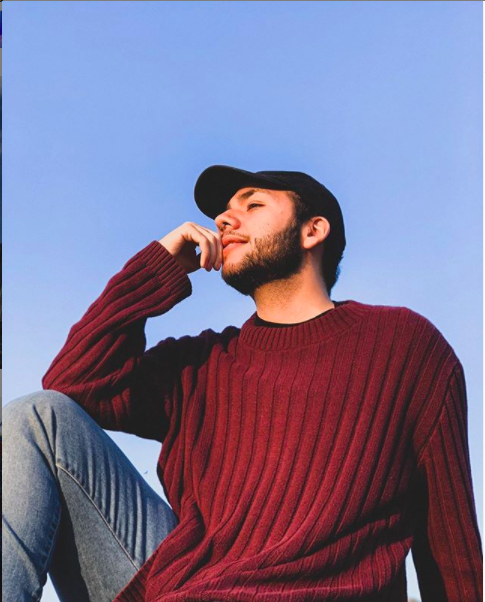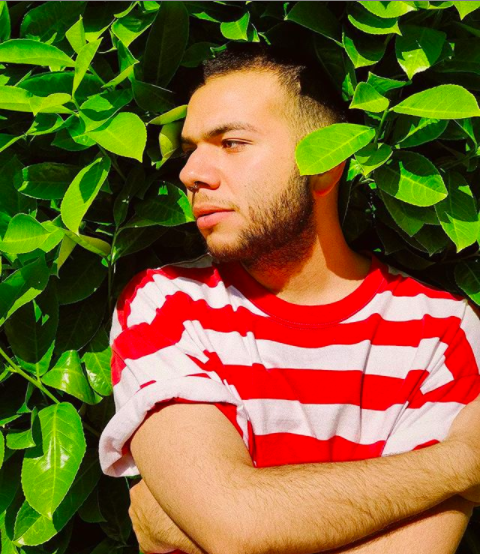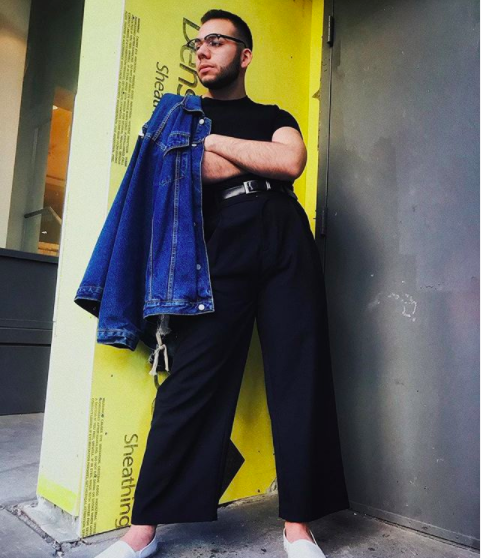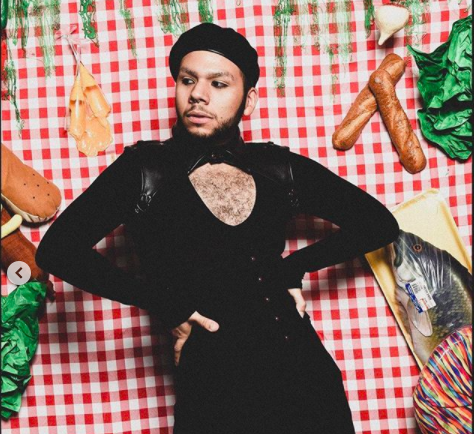Trans lives (primarily Black trans lives) are taken every year and queer people are attacked and beaten in public every year, simply for being true to who they are. So, although going to a drag show is freeing and playful, at its core it is an art form that is under-appreciated. It’s also a glamorous way to celebrate one another while resisting the status quo and continuing to challenge the hatred that LGBTQ+ communities are still facing today. But, drag wasn’t always a form of resistance.
What would later be referred to as cross dressing was done by early civilizations like the Aztecs, Incas, and Egyptians to invoke gods, ward off evil spirits and even bring rain to their people. It was sacred. By the 20th century cross dressing was common in theatre and the term drag referred to the way the dresses would drag across the stage.
It wasn’t considered counterculture or illegal until religious bigotry and hatred associated it with homosexuality. By the 1950s venues that were considered to be “gay-friendly” were being raided and if people were wearing fewer than three pieces of clothing that matched their assigned gender at birth they would be arrested under the “three piece law” for dressing in drag.
In 1969 the police raided one of the only gay bars in New York City, the Stonewall Inn and were met with the pent up rage of decades of discrimination and state sanctioned humiliation. The Stonewall Riots were ignited by Black and Latinx trans women and LGBTQ+ communities rallied, rioted and protested for their rights for 6 days, leading to progress for our LGBTQ+ rights.
This is exactly why this PRIDE month we are highlighting some very talented, very fabulous Queens who have taken drag to another level. At a time when resistance is paramount and ALL Black Lives are still in need of support, drag reminds us all where we came from and give us the strength to continue our fight for equality. Their video renditions of modern drag during COVID-19 social distancing have blown the Seattle drag scene away. For the first installment of this video and interview series we spoke with the Queen, videographer, and photographer, Justin Ortiz.

RIZE: Let’s start by introducing you to the world.
Justin Ortiz: Hello I am Justin Ortiz . I am a 25-year-old queer Latinx artist, originally from New York . I moved out to Seattle when I was a teenager. I have always been inspired by music and music videos. A lot of the imagery that I come up with is inspired by lyrics. Whenever I hear a song it’s easy for me to picture a world surrounding that song, so when it comes to my art I try and emulate that and try to create that world and make it something real. I like to work with other artists here in the community in Seattle, specifically drag artists. We all Kiki and have a great time. I like to work with other musicians as well, like Archie or Michete.
RIZE: Tell me about how you got started doing photography and videography work?
J.O.: Photography is something that I’ve been interested in since I was a teenager. As I got older it became more than just a hobby and more of something I was interested in as a career field. Once I got to go to clubs and see all these people performing I was like, “Oh my God. All these people are so inspirational with their looks.” I always want to capture these moments. For me, I realized it was time for me to start bringing my camera to the club to see what I could capture and from there it snowballed into me becoming one of the Queens and befriending a lot of the Queens, and beginning to work with them more personally.
Once the pandemic happened I dived more into videography which I actually went to college for. It’s been nice to get back into the world of film and realizing that it is definitely the lane I should be in more so than photography but they go hand-in-hand in certain ways.
RIZE: When did you start your work in the drag scene here in Seattle?
J.O.: I became more involved in the last year and a half. I was dating someone that was in the drag scene and they were the ones who encouraged me to really go out and talk to people and take their photos. Since then I got more involved and became a Queen myself .
I realize that performing is not my favorite but I do love putting on makeup and becoming a different character. Once I befriended people they came to me with ideas for photoshoots or were like, “Hey I really like your photos can you send this to me?” The more I started working with these Queens the more they appreciated the work that I was doing. It quickly got me recognized and now I’m a part of that community.
RIZE: Can you tell me about your love for drag and your experience as a performing Queen?
J.O.: My stage name was Karma. At first, it was Karma Amor, but I was noticing a lot of people were misspelling it or saying it wrong. It’s love in Spanish. It’s not that hard but people were saying armor or Karma armoire, (laughs) girl! It’s not that hard. It’s four letters.
It was always a really fun experience to get to perform and be in front of people and be the center of attention but it was also very nerve-wracking because I’ve always been the person that is behind the camera. It was nice, but it also wasn’t my favorite all the time. Karma still here. She just won’t be on stage.

RIZE: You recently worked with a bunch of local Queens and created videos that were shot and edited by yourself. Can you tell me about this project and how it all came to fruition?
J.O.: Originally my roommate, her name is IssaMan. She came to me around February when the Spliff Film Festival was about to be a thing . She wanted to submit a really cool drag fashion film that involved weed and smoking. She wanted to use this as a way to showcase local Queens but also be super creative and pay homage to one of her favorite horror films — Hereditary.
We were going to do this whole crazy bit that featured in the film. Unfortunately, once pandemic happened everything was put on hold. We decided to utilize the footage and create a video for Instagram so that people are still seeing us. Showing people that we don’t have to be onstage all the time. We can still utilize what we have to keep entertainment alive when it comes to drag. She was like, “Let’s edit together a really cool video using bougie Party by Chloe and Halle.” She got into the same outfit she wore in the original clips we had. She lip-synced in our bathroom and then from there I went and edited it all together and we created a really cool music video. From there people were very interested and really liked seeing what we did.
It was a little controversial because people thought that we weren’t social distancing and all the clips were filmed recently and we were breaking pandemic rules. We had to pull up some receipts for some of the white Queen’s who were a little bitter but you know, we showed them what was up and soon enough everybody started doing their own thing. It has been great. I’ve had a lot of people who I can thank for allowing me to film them and create these videos for them.
RIZE: Can you tell me about the Twitch experience for Lashes? Lashes went virtual, right?
J.O.: When lashes first went virtual they were using Zoom to air on Twitch which was a weird concept at first. Floyd, the manager at RPlace decided that hey we’re going to send in pre-recorded videos and use the pre-recorded videos for your performance number instead of having to do everything live. It’s more controlled. It’s a little bit easier for the Queens so they are not pressured and can make mistakes if they need. It’s definitely a way to be more creative too.
LuChi, who is a great Duo here in the city, reached out to me and wanted to do a video. From there it built up and now I have a lot more people who are hitting me up for Lashes. It’s really cool going from a day of filming to putting it together and sending it out.
RIZE: The videos have this really dope 80s music video vibe. What made you choose this era or style for these videos?
J.O.: It’s what I grew up listening to and what I grew up watching. I’m from New York and my mom was a very big club kid in the 80s. She was going to places like The Tunnel and Studio54. My mom was that girl, haha. Hearing all her stories and seeing her excitement and feeling that energy, I always connected with it. When I was growing up MTV was something that I was always watching, VH1 was something that I was always watching, and even when I wasn’t watching these things I was on AOL music watching videos.
I was always interested in music and music videos so I think it was unintentional that it was an 80s vibe but that’s just where my mind goes. I’m very much into that style of music videos. I feel like you don’t get that anymore. I feel like with music videos now, they’re cool, but they can tend to be a little bit flat. Whereas, I feel like people in the 80s and 90s were like, “We’re going to make do, and we’re going to use these really cool green screens, and these really cool camera angles to create this new dynamic and this new world. That’s what I liked about it.

RIZE: There is no one specific way for drag to manifest. Every city has its own drag families, its own drag culture, and its own drag history. How would you define Seattle’s drag culture?
J.O.: Seattle’s drag culture is surprisingly diverse in an aesthetic sense. You have those really cool artsy performing art Queens like Stasia Coup, BitchHazel, AngelBaby Kill Kill Kill, Beau Dega, The list goes on for those really cool performance art Queens. Then you have those high glam gorgeous Queens who are always beat. People like Mila Skyy , Irene DuBois, Kaleena Markos. IssaMan is I feel like one of the glamour queens that everyone kind of sleeps on, and Rowan Ruthless who is gorgeous. These are the people perpetuating this beauty, you know?
You also have those people who are in the middle like, Jane Don’t who is the bearded Queen and is gorgeous, same with Dion Dior black. Then you have these AFAB Queens who are these gorgeous women who have made themselves into even more gorgeous goddesses and creatures.
I feel like Seattle is one of those cities that everyone sleeps on the most because the exposure to the nation of Seattle’s Queens has Ben DeLa Creme, Jinx Monsoon all incredible Queens but they are very old school burlesque aesthetic and people don’t realize that Seattle is more than that. There’s so much more.
RIZE: Favorite song to perform in drag?
J.O.: One of my favorite songs that I performed in Drag was actually a ballad. It was needy by Ariana Grande but instead of the original instrumental it was put over the instrumental of Love Drought by Beyonce. It was a really emotional number where I was expressing, “I am a needy individual. I am a clingy bitch. That is who I am and if you don’t like that I don’t know what to tell you.” I love love. I am a Cancer so being emotional is my essence.
The second installment of this series is coming soon! Follow Justin on Instagram at @thatsmxjay.











